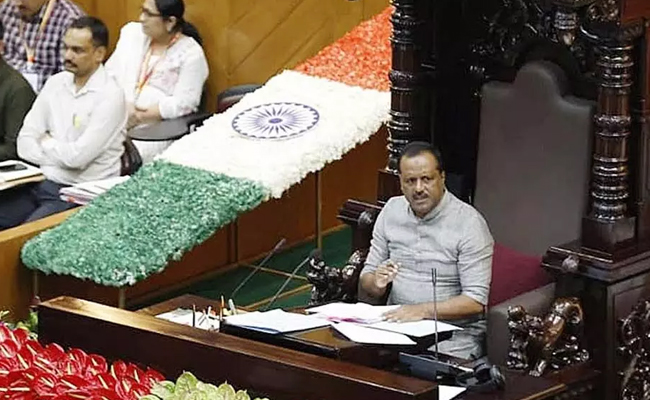Bengaluru, Jan 1: The BJP leader Chalavadi Narayanaswamy on Wednesday charged that Minister "Priyank Kharge's name is found at three places" in the suicide note written by contractor Sachin Panchal but Chief Minister Siddaramaiah defended the minister for want of evidence.
Narayanaswamy, Leader of Opposition in the Karnataka Legislative Council, said the Chief Minister has been saying that Kharge’s name is not mentioned in the suicide note written by contractor Sachin Panchal, which was wrong.
"Minister Priyank Kharge’s name is mentioned at three places in the seven-page suicide note. You demand documents. Here is the one. What else should we produce?” Narayanaswamy told reporters here.
Chief Minister said there was no document to prove and hence the question of removing Priyank Kharge would not arise, Narayanaswamy noted.
ALSO READ: No evidence against Minister Priyank Kharge in contractor suicide case, says CM Siddaramaiah
“We know that you don’t have the guts to remove him because the Minister’s father Mallikarjun Kharge is the Congress president. If you touch Priyank then he would uproot you. You are afraid of losing power. You are glued to your chief ministerial position,” the BJP leader alleged.
He said everyone was initially doubting the seven-page suicide note written by Panchal but now the FSL report has confirmed that the letter was written by the civil contractor himself.
It is confirmed that this suicide note is not fake but the original one, Narayanaswamy said adding that the government has to answer to Panchal’s suicide.
The BJP leader said there is a threat to Panchal’s family and, especially five sisters of Panchal. He also alleged that Panchal suicide case has a honey trap angle too. He reiterated BJP's demand for a CBI probe in the case.
Panchal died by suicide by lying before a moving train in Bidar district. In his suicide note, he alleged that Raju Kapanur pestered him for rupees one crore, a charge which Kapanur has denied.
Panchal also alleged that Kapanur hired contract killers to eliminate BJP MLA Basavaraj Mattimud and, two other top BJP leaders in Kalaburagi and a Lingayat pontiff.
The BJP alleged that Kapanur is Rural Development and Panchayat Raj Minister Priyank Kharge's close aide.
Let the Truth be known. If you read VB and like VB, please be a VB Supporter and Help us deliver the Truth to one and all.
Palakkad: A group of children celebrating Christmas through a carol roadshow was allegedly attacked by BJP workers in Kerala’s Palakkad district on Sunday night.
According to local reports, the incident occurred in Pudussery area of Palakkad, where over 25 children, mostly aged around 13, were moving from house to house singing Christmas carols. Reports state that a BJP worker identified as Ashwin Raj, along with others, allegedly assaulted the children and vandalised their musical equipment.
According to the police and eyewitness accounts, the children were using a band set that belonged to a local CPI(M) office, which had the party’s name written on it.
Allegedly objecting to this, the accused and his associates reportedly lured the children on the pretext of offering them money and then assaulted them. The band set used by the children was also smashed.
ALSO READ: Punjab: Duped of Rs 8 crore in cyber fraud, ex-IPS officer Amar Chahal shoots self in Patiala
The Town Police have arrested Ashwin Raj, a local BJP worker who has been named as the prime accused in the case. Efforts are underway to trace and arrest the remaining accused who fled the scene.
Speaking to the media, one of the injured children said, “We were using the band just for fun. When they saw that it had CPM written on it, they took us aside and beat us.”
"We had given the band set that was in our office out of love when the children asked for it. The fact that these young children, who do not know the intricacies of politics, were attacked shows the criminal mentality of the BJP workers," local CPIM leaders expressed outrage.
A police officer told PTI that the arrested accused is already booked under the Kerala Anti-Social Activities (Prevention) Act (KAAPA).
The sections invoked include Section 192 (provocation with intent to cause a riot), Section 115(2) (voluntarily causing hurt), and Section 110 (attempt to commit culpable homicide), police added.





